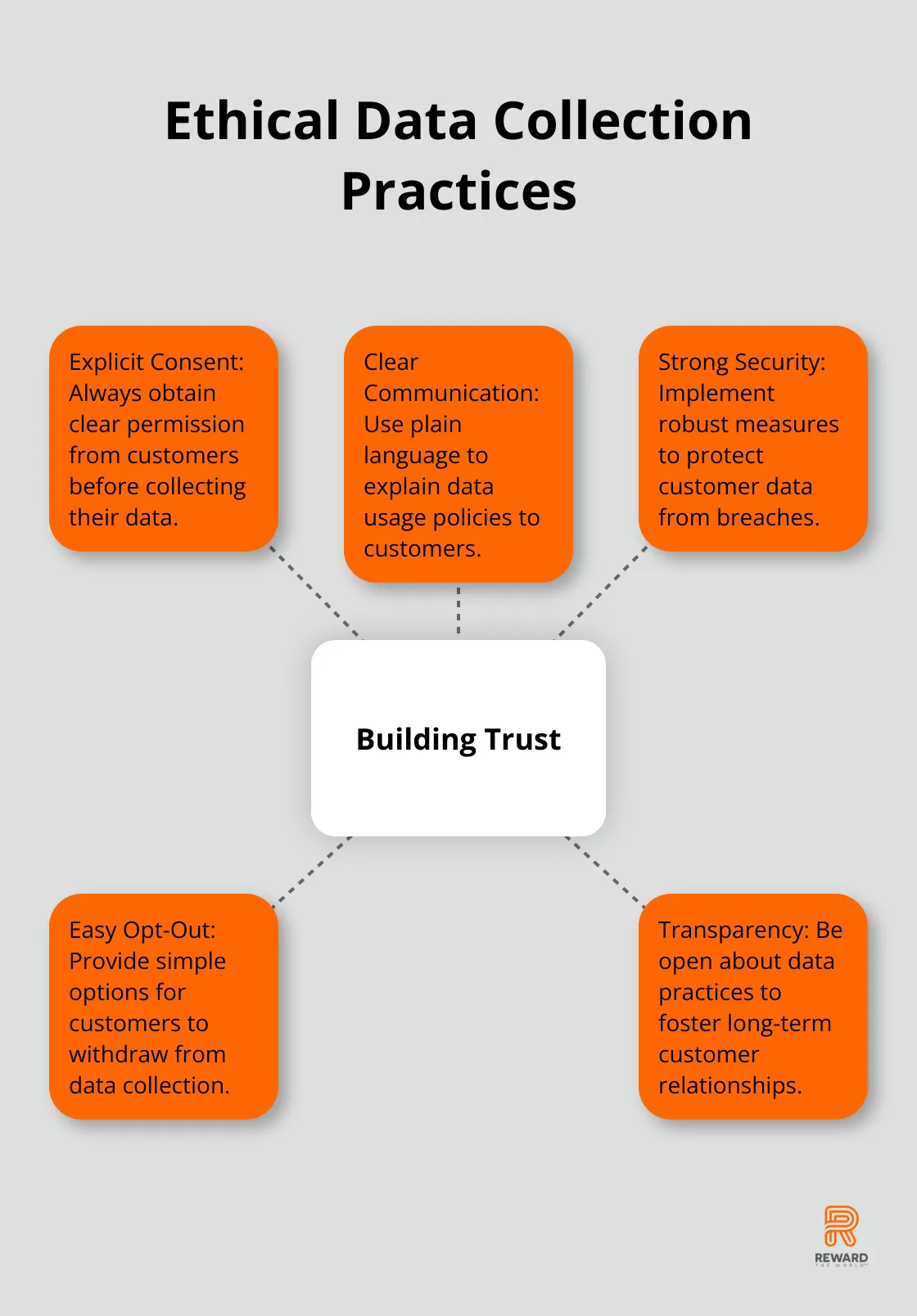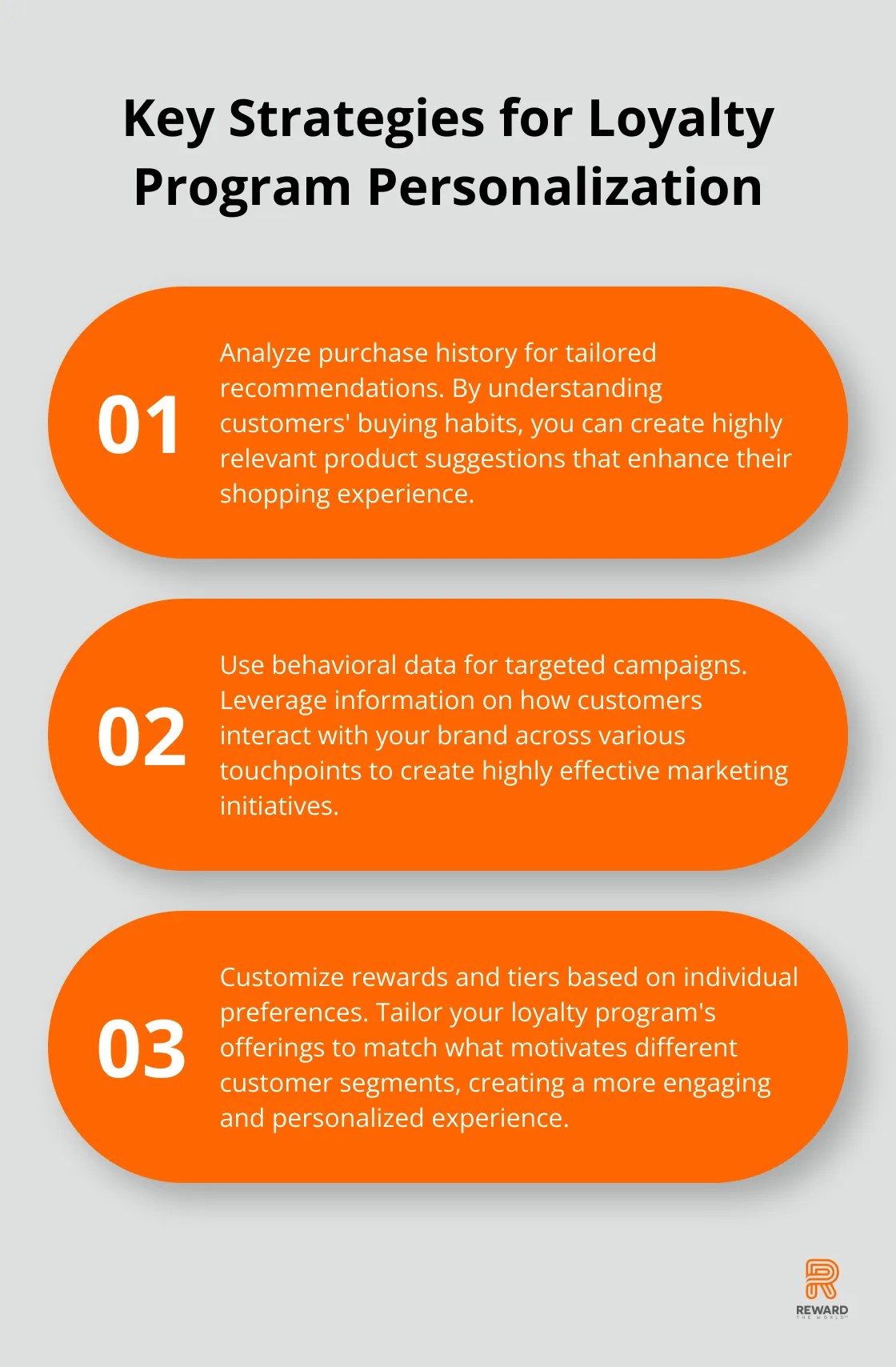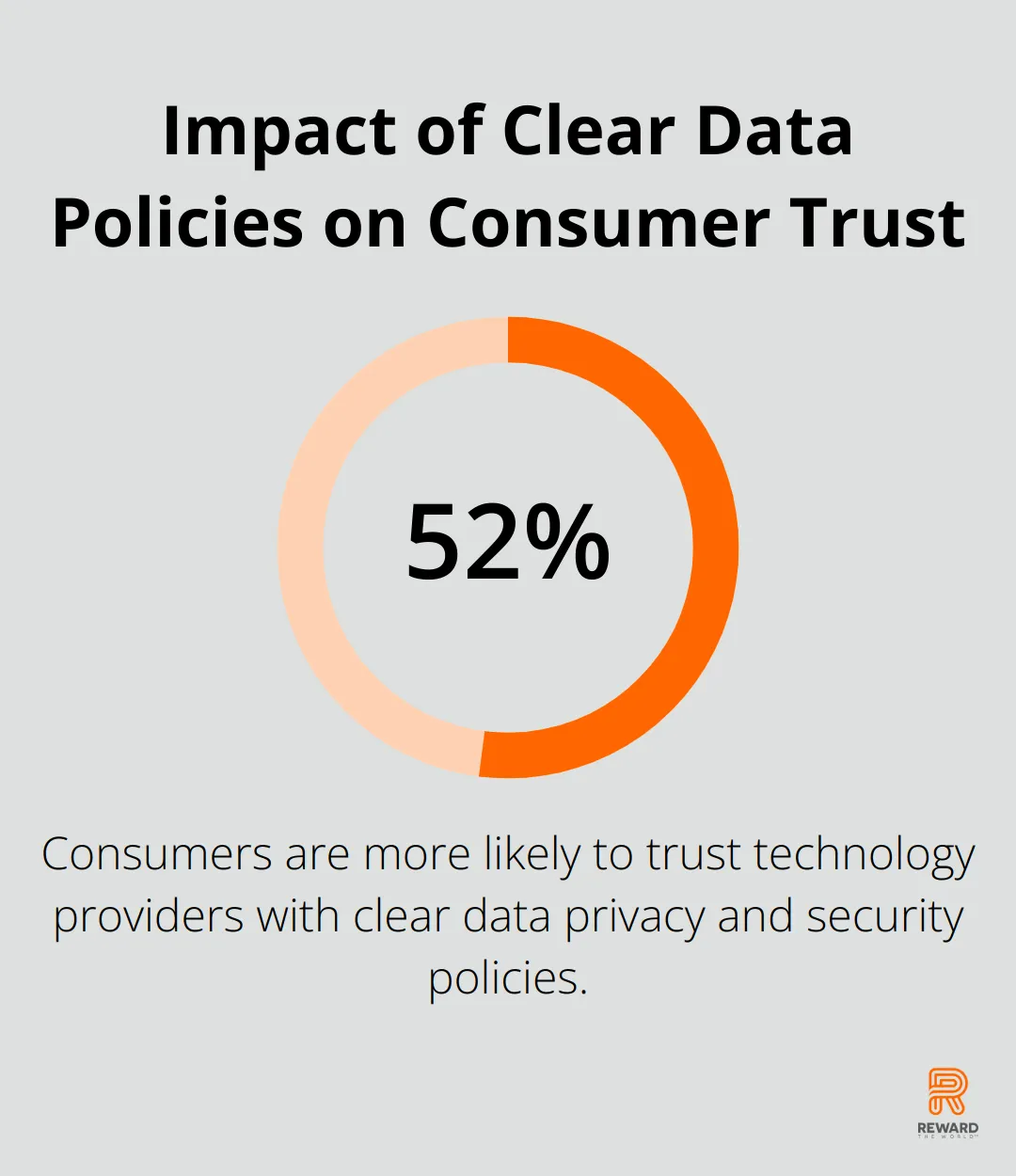
Loyalty programs have become a goldmine of customer data. However, with great data comes great responsibility.
At Reward the World, we believe in harnessing the power of data monetization ethically. This guide explores how to leverage loyalty program data while respecting customer privacy and building trust.
We’ll dive into best practices for data collection, personalization strategies, and maintaining the delicate balance between data utilization and customer privacy.
How to Collect Loyalty Data Ethically
At Reward the World, we understand the importance of ethical data collection in loyalty programs. It’s not just about gathering information; it’s about building trust with your customers. Here’s how you can ensure your data collection practices are ethical and transparent.
Obtain Explicit Consent
Always obtain explicit consent from your customers before collecting their data. This means you must clearly explain what data you’re collecting, why you’re collecting it, and how you’ll use it. When a customer signs up for your loyalty program, provide a clear, concise explanation of your data practices and ask for their agreement.
Communicate Data Policies Clearly
Your data usage policies should be easily accessible and written in plain language. Avoid legal jargon that might confuse your customers. Instead, create a simple, easy-to-read document that outlines your data practices. You could consider creating an infographic or video to explain your policies in a more engaging way.
Implement Strong Security Measures
Protecting customer data should be your top priority. Implement robust security measures such as encryption, regular security audits, and employee training on data protection. You could use advanced encryption methods to protect customer data during transmission and storage. Regular penetration testing can help you identify and address potential vulnerabilities in your systems.
Provide Easy Opt-Out Options
Customers should have the freedom to opt out of data collection at any time. Make this process simple and straightforward. Include an easily accessible “Data Preferences” section in your loyalty program app or website where customers can adjust their data sharing settings.
Transparency Builds Trust
Ethical data collection is not just about compliance; it’s about building long-term relationships with your customers based on trust and transparency. A study by Deloitte into European attitudes on the use of consumer data by grocers underscores the importance of ethical data practices in building customer loyalty.

Now that we’ve covered the basics of ethical data collection, let’s explore how you can leverage this data to create personalized experiences for your customers (without crossing any ethical boundaries).
How to Personalize Your Loyalty Program
Analyze Purchase History for Tailored Recommendations
Personalization starts with understanding your customers’ buying habits. Purchase history analysis allows you to create highly relevant product recommendations. If a customer frequently buys organic products, you can suggest similar items or complementary organic goods.
To implement this strategy:
- Categorize your products
- Identify patterns in customer purchases
- Create automated recommendation engines
These engines will suggest products based on individual buying habits, enhancing the customer experience and potentially increasing sales.
Use Behavioral Data for Targeted Campaigns
Behavioral data encompasses more than just purchases. It includes how customers interact with your brand across various touchpoints. This information can power highly targeted marketing campaigns.
For example:
- If a customer segment frequently browses a particular category without purchasing, create a special offer for those items.
- When customers abandon their carts, trigger a follow-up email with a small discount to encourage purchase completion.
Customer obsession is now commonly accepted as the best growth strategy, with superb customer experiences being expected. This underscores the importance of personalized campaigns.

Customize Rewards and Tiers
Loyalty program rewards should not follow a one-size-fits-all approach. Use your data to understand what motivates different customer segments and tailor your rewards accordingly.
For price-sensitive customers, offer cashback or discounts. For those who value experiences, consider exclusive event invitations or early access to new products.
You can also create personalized tiers within your loyalty program. Instead of standard Silver, Gold, and Platinum tiers, consider tiers based on customer behavior and preferences. This approach can make your program feel more exclusive and tailored to each individual.
Implement Dynamic Pricing
Dynamic pricing, based on customer segments and behavior, can significantly enhance personalization. By better integrating loyalty programs with pricing strategies, consumer-facing businesses can drive growth in a muddled economic landscape.
For instance, you might offer loyal customers (those in higher tiers) slightly lower prices or exclusive discounts. This approach not only rewards loyalty but also encourages customers to engage more with your program to access better pricing.
Personalize Communication Channels
Different customers prefer different communication channels. Some may respond well to email marketing, while others engage more on social media or through push notifications.
Analyze your customers’ interaction patterns to determine their preferred channels. Then, tailor your communication strategy accordingly. This personalization extends beyond just the channel – the content, tone, and timing of your messages should also align with individual preferences.
As we move forward, it’s crucial to balance this powerful personalization with respect for customer privacy. Let’s explore how to strike this delicate balance in our next section.
How to Balance Data Use and Privacy
Anonymize and Aggregate Data
One effective approach to protect customer privacy while maximizing data value involves the anonymization and aggregation of customer data. This process removes personally identifiable information and combines data from multiple customers into larger datasets. For example, instead of analyzing individual purchase histories, you could examine buying trends across age groups or geographic regions. This method allows you to gain valuable insights without compromising individual privacy.
Consumer trust and loyalty are hard to gain. It’s time to tap into customers’ emotions using loyalty programs, powered by data insights.
Implement Data Minimization
Data minimization stands as a key principle in privacy-conscious data management. It involves the collection and retention of only the data that’s absolutely necessary for your loyalty program’s objectives.
To start, conduct a data audit. Identify the data you currently collect and its purpose. Then, critically evaluate each data point. Ask yourself: Is this information essential for our program’s success? If not, cease its collection.
For instance, a coffee shop loyalty program probably doesn’t need to know a customer’s annual income. Their coffee preferences and visit frequency likely prove more relevant (and less intrusive) data points.
Conduct Regular Audits and Update Policies
The data landscape constantly evolves, and your data usage policies should keep pace. Regular audits of your data practices are essential. These audits should cover the data you collect, how you use it, and whether these practices align with your stated policies and current regulations.
Better transparency and control can promote higher trust: Around half (52%) of consumers who feel their technology providers have clear data privacy and security policies are more likely to trust them.
Update your policies based on these audits and communicate changes clearly to your customers. Transparency builds trust, and trust forms the foundation of any successful loyalty program.

Empower Customers with Data Access
Providing customers access to their own data not only meets legal requirements in many jurisdictions but also serves as a powerful trust-building tool. Create a user-friendly interface where customers can view, download, and even delete their data if they choose.
This level of transparency and control can significantly boost customer confidence.
Prioritize Data Security
Implementing robust security measures (such as encryption and regular security audits) should be a top priority. Train employees on data protection protocols and conduct regular penetration testing to identify and address potential vulnerabilities in your systems.
The implementation of these strategies can create a loyalty program that effectively leverages customer data while respecting customer privacy. In the long run, customer trust proves far more valuable than any short-term gains from aggressive data use.
Final Thoughts
Ethical data collection and utilization in loyalty programs build lasting customer relationships. Businesses can create a foundation of trust through explicit consent, clear communication, robust security measures, and opt-out options. Leveraging loyalty program data for personalization enhances customer experiences, but companies must balance this with privacy concerns.
Anonymizing data, minimizing data collection, conducting audits, and providing customer data access protect privacy and demonstrate ethical handling. These practices strengthen customer trust and lead to more relevant offers, better service, and deeper understanding of customer needs. Data monetization, when done ethically, can drive increased loyalty and business growth.
Reward the World helps businesses leverage customer data responsibly with powerful analytics tools. Companies should regularly evaluate their data practices to ensure loyalty programs remain effective and ethical. Trust is the ultimate currency in loyalty programs, and ethical data practices foster long-lasting, mutually beneficial customer relationships.
